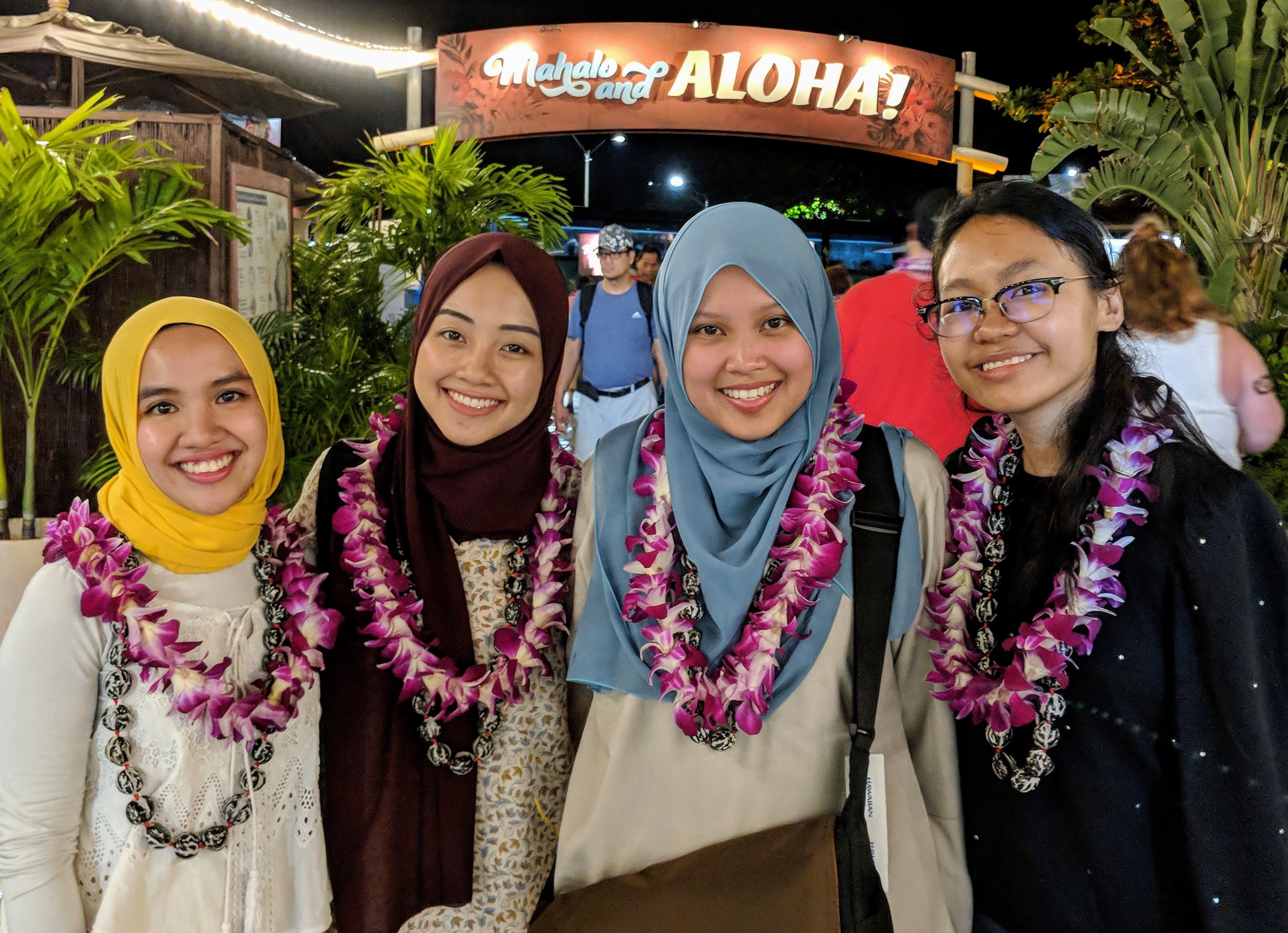Why Singapore’s English Teachers Should Embrace Singlish, Not Fight It
Is it time for Singaporean educators to embrace Singlish as a legitimate learning tool? What the Research […]
Read More
Bilingualism has long been the cornerstone of Singapore’s education system, but knowledge of other countries’ teachings on bilingualism is limited. To broaden their perspectives on bilingualism, four student teachers and their lecturers embarked on an educational visit to Hawaii in October 2018. As part of an NIE Malay language course on Bilingual learners and Bilingual education, they experienced a Hawaiian language revitalization programme which examined the societal, political and historical contexts that were important to the educational issues in multilingual societies. The four student teachers reflect on their visits to the Nawahi Lab Public Charter school, the College of Hawaiian Language of the University of Hawaii at Hilo and two museums in Hawaii.

(From left to right) Filzah, Syahiratul, Raudah and Ardillah
NIE-NTU Teaching Scholars Programme, Year 4
Through the visits, I learned the importance of community support and instilling a strong sense of cultural identity in ensuring the success of a bilingual education programme. In the Nawahi School, parents themselves learn about the Hawaiian language and culture during weekly parent-teacher meetings. This way, they have a better idea of what their children
are learning in school and how they can support their children’s learning from home. I learned that relaying your expectations and school happenings to parents is important in helping a child reach his or her full potential as it ensures continuity in the child’s learning both at home and in school. As a future educator, I hope to foster a close partnership with parents to inculcate a shared vision of language learning and incorporate cultural themes in my lessons to cultivate a strong appreciation for the Malay language in my students.
NIE-NTU Teaching Scholars Programme, Year 4
It was exciting to learn about a different bilingual education programme offered in Nawahi Lab Public Charter School! One interesting point to note is that the school is part of a ground-up initiative to revitalize the Hawaiian language. I’m glad that I had the opportunity to observe how their classes were conducted and interact with students who were enthusiastic to learn! An immersive environment in school and at home will help the language and culture to thrive. For example, students learned how to make leis (a garland in Hawaiian custom) using ti leaves. It was an unforgettable experience and I’ll work hard to apply the learning points that I’ve gained from this visit when I become a teacher.
Teacher, St. Joseph’s Institution Junior
The trip allowed me to further understand the connections between societal, political and historical issues and language learning. I am now inspired to find out more about different bilingual education models practiced outside of Singapore and different teaching strategies language teachers use in their classrooms. The highlight of the immersion programme was one such strategy applied in the Nawahi School: translanguaging. Although lesson materials in the Nawahi School were in English, lessons were executed in either English or Hawaiian, depending on the language skill teachers want their students to develop. For instance, a teacher might ask students to read and write in English but speak in Hawaiian. This allows for a safe learning environment in which students are able to practice both languages concurrently at ease. Although our bilingual education model differs from Nawahi’s, some strategies employed are relevant to Malay Language education in Singapore, especially considering our students’ profiles today. Hence, I hope to adapt them in my classrooms in future.
NIE-NTU Teaching Scholars Programme, Year 4
The visit to Hawaii exceeded my expectations. Not only did we learn about the bilingual education system, but we also engaged in discussions on topics such as community efforts and involvement, pre-service teacher courses and publications of literature. Visiting the museums allowed me to experience the traditional sports, performing arts, costumes, food and language of the Polynesians first-hand and the exchange of views and experiences was a meaningful addition. I was impressed by the communities’ strong camaraderie in preserving their unique identity and way of life while still being engaged with the wider society. I was also delighted to draw similarities between the Malay and Polynesian cultures, such as their voyaging activities and seafaring nature. Learning, especially in the fields of language, literature and character education, is no longer one-dimensional. Like the Hawaiians in Nawahi School, the emphasis on culture, identity and traditional practices drives the success of their language revitalization programme. With these takeaways, I hope to shape my future Malay Language classes into those that truly embody and empower my bilingual students.
Subscribe to our newsletter to receive the latest information about our articles and events. Email us at sgteach@nie.edu.sg for assistance.
On topics related to teaching and learning, we invite you to contribute articles that focus on the following:
We welcome contributions that explore how educators are shaping the future of learning in a rapidly changing world marked by technological advancements and global challenges.
If you have a classroom or education research story to share, we invite you to send in your contribution articles.
Submit your contribution here:
SingTeach complies with the Personal Data Protection Act 2012 of Singapore
For questions, please contact the editorial team: sgteach@nie.edu.sg
